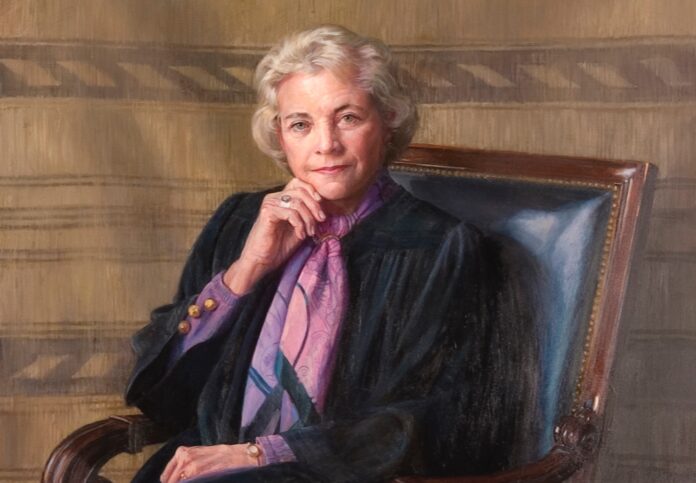The nation’s first female Supreme Court justice has passed. Sandra Day O’Connor was a woman of many “firsts.”
Born in El Paso, Texas to cattle ranchers, O’Connor was raised on a remote ranch that, in her younger years, was without electricity or running water.
Through grit, hard work, and determination, she would become an accomplished lawyer and was named by President Ronald Reagan to the Supreme Court.
After graduating from high school in 1946, O’Connor was accepted to attend Stanford University, where she became senior class president. She completed two degrees in six years and received her law degree two years later, also from Stanford, during which time she was on the board of editors for the prestigious Stanford Law Review. She graduated third out of a class of 102 law students.
Her marriage and career took her to Germany, then to Arizona, where she raised her children with husband John O’Connor; she eventually returned to the practice of law and became an assistant attorney general for the state. She was appointed by the governor of Arizona to finish the term of a retiring state senator, and when she subsequently ran for the seat, she was reelected, and was immediately chosen by her peers to be the state Senate majority leader, another first.
In 1975, she was sworn in as an Arizona Superior Court judge and in 1979 she was sworn in as a judge on the Arizona Court of Appeals.
During the final month of the 1980 presidential campaign, candidate Ronald Reagan promised to voters that, if elected, he would appoint a woman to the U.S. Supreme Court. In July 1981, President Reagan made good on the promise and nominated O’Connor. The Senate confirmed her 99-0, with just one member missing the vote. O’Connor became the first female justice in the nearly 200-year history of the Supreme Court.
She was diagnosed with breast cancer in 1988 and underwent a mastectomy and chemotherapy.
In an Alaska case decided in 1997, O’Connor penned an important opinion relating to submerged lands on the Arctic shelf, after the the federal government disputed the ownership.
The Alaska Statehood Act had expressly provided that the federal Submerged Lands Act applied to Alaska, entitling Alaska to submerged lands beneath tidal and inland navigable waters and submerged lands extending three miles seaward of the State’s coastline.
The federal government claimed a right to submerged lands along the Alaska’s Arctic Coast for mineral leasing.
Alaska sought to solidify its title to coastal submerged lands within two specific federal areas, the National Petroleum Reserve Alaska and the Arctic National Wildlife Refuge, formerly known as the Arctic National Wildlife Range.
The opinion authored by Justice O’Connor ruled that the federal government owned the disputed submerged lands adjacent to the National Wildlife Refuge and the National Petroleum Reserve along Alaska’s Arctic Coast.
Arguing on behalf of the State of Alaska was Bruce M. Botelho, who was attorney general for Alaska.
After serving for nearly 25 years, O’Connor retired in 2006. When she passed on Friday in Phoenix, she was 93.
More about O’Connor at the Sandra Day O’Connor Institute for American Democracy at this link.

She has a lot of baby blood on her hands.
It was just as stupid for Ronnie to make a diversity appointment to SCOTUS as it was for Biden to do so.
K- 95 Wearing Pedant hovering over a soda and snack encrusted sticky keyboard.
Last I checked FEMALES comprised over half of the population, how was appointing a woman a diversity appointment?
Mental Health help is readily available, even in Juneau. I suggest you seek a solution for your delusional affliction.
You’re Welcome. And Merry Christmas!
Comments are closed.